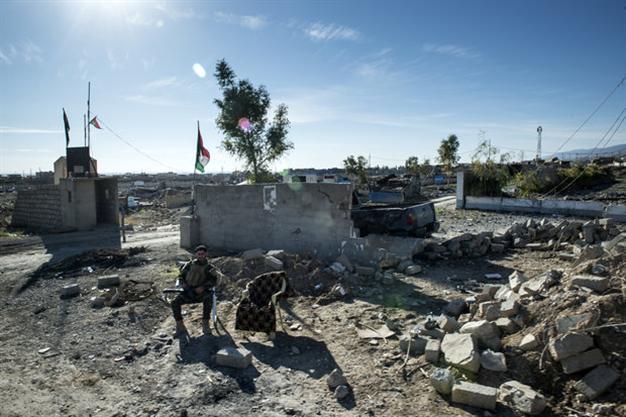Sinjar turns into ghost town after ISIL rule
Gülden Aydın – SINJAR

Photo: Sebati Karakurt
The town of Sinjar has become a ghost town since the departure of Islamic State and Iraq and the Levant (ISIL) militants in early November.
Hürriyet reporters entered the northern Iraqi town near the border with Syria, where around 250,000 Yezidis had lived before the area was seized by ISIL jihadists in August 2014. Many of the fleeing Yezidis were killed, women were forced to slavery, and many died on the mountains trying to escape. Those who managed to survive the harsh conditions of their escape took shelter in the area ruled by the Kurdistan Regional Government (KRG) in Iraq.
Sinjar was recaptured from ISIL on Nov. 13 in a major operation led by forces from Iraq’s autonomous Kurdish region and backed by U.S.-led air strikes. Around 27,000 Peshmerga forces from the Massoud Barzani-led KRG entered the town on Nov. 12 and took control. Civilians are still banned from entering the ruined town, where landmines and bomb traps remain active, but Hürriyet reporters were able to enter the town, where they witnessed traces of war, death, cruelty and occupation.
Camps built for the Yezidis by the KRG and international aid institutions can be seen on the road from Zoha, around 150 kilometers from Sinjar. One side of Sinjar has a road bordering the northern Syrian region of Rojava, where People’s Protection Units (YPG) militants and their flags can be seen. On the road passing from the other side is the city of Mosul, still under the control of ISIL. In the towns of Sinone and Rabia, which were also occupied by ISIL last year, have no signs of the life.
Yezidis are now living in thousands of tents in the valleys near the mountains that surround Sinjar. These mountains today create a natural border between the Yezidis and ISIL militants, and on the top of these mountains a mock-up of a vehicle with a heavy machine gun symbolizes the Peshmerga forces ruling on the Yezidi side.
In the ruined Sinjar itself, traces of departed ISIL militants can be seen everywhere, with bullet holes and turned over cars visible on every street.
Peshmerga forces in the town told Hürriyet’s reporters not to make any move without their knowledge, particularly warning about bomb traps or unexploded landmines in the area. Sinjar is now filled with pictures of KRG head Barzani and flags of his Kurdistan Democratic Party (KDP).
On the walls of the many burned-out houses, scrawled graffiti proudly describes how buildings were looted by ISIL and which senior ISIL commanders carried out the looting.
